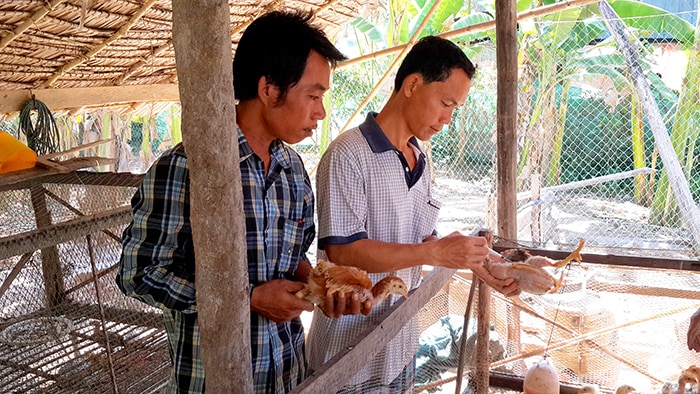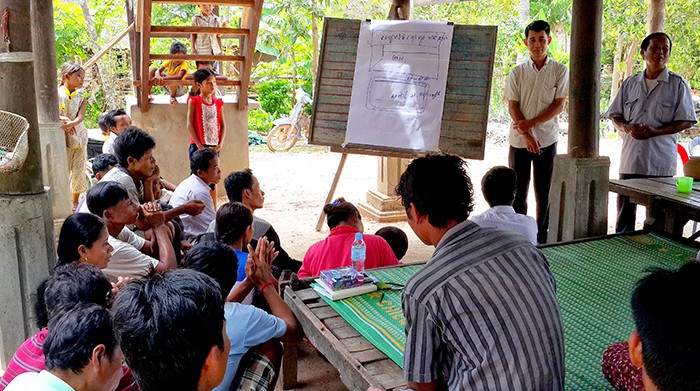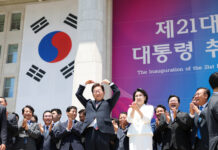
Farmers inject young chickens with vaccines at a poultry farm in Cambodia. This farming community has been truly inspired by South Korea’s set of agricultural development policies from the 1970s and 1980s, the Saemaul Undong, or New Community Movement.
In the early 1970s, rural South Korea was impoverished until the government-led New Community Movement, orSaemaul Undong, a set of agricultural development policies, began to be implemented as part of an overall economic growth campaign. The agricultural industry was restructured, and modern agricultural technologies were adopted in the rural hamlets of Korea. That set of rural development policies and its related government campaigns is now inspiring rural development in other countries.
The landscape of a rural town of poultry farmers in Takeo Province, Cambodia, has changed completely over the past year. The mortality rate has dropped down to 3 percent, from 27 percent, and the cost of chicken feed, the farmers’ main input and largest single cost, has fallen by 23 percent. The minimum period of chicken maturation, from chick to selling them in the markets, has been shortened from 90 to 64 days, and farmhouses now retain a profit of USD 2.15 per chicken. All these changes have taken effect since the town began to adopt some of the policies from the Saemaul Undong. This has all been part of the Korea Program on International Agriculture (KOPIA) run by Korea’s Rural Development Administration (RDA).
The RDA, through its KOPIA branches around the world, provides localized agricultural technology and conducts international joint studies into how to jointly develop agricultural resources. The Saemaul Undong-inspired poultry farming program, run by the KOPIA center in Cambodia since 2015, is part of these moves. To begin with, together with the Cambodian Ministry of Agriculture, Forestry and Fisheries and the Royal University Agriculture, the center carefully selected five towns. It then supported farmers there and helped them to organize agricultural cooperatives. The center was able to share poultry farming technologies with the farmers, and the farmers, in turn, were able to develop their own foundation for self-support

Farmers, who can see first-hand the ongoing Saemaul Undong-inspired changes that are transforming their villages, attend an educational session about new localized tips and skills to be used in poultry farming.
“The KOPIA center in Cambodia paid for the first and second chicks to breed. We paid it back with earnings from selling the chickens. The center, again, returned what we had paid back, paying it into our town’s collective funding account. The farmers in our town, then, can get from the collective funding account a short-term USD 200 loan at a low interest rate of about 1.5 percent per month, with no guarantees, for our third purchase of chicks, which is perfectly tailored help for us farmers and helps us in the town secure our profits,” explained one of the farmers in an appraisal held on July 19 in the Cambodian town.
The number of participating farmhouses in the program increased 98 percent, to 139 farmhouses, after the first year, from the initial 70 farmhouses across three towns. Their collective funds are now worth around USD 43,500, and over the past six months this year, a total amount of loans worth some USD 23,500 were made to 70 farmhouses.
When this three-year program ends in 2017, the funds raised by the farmers themselves will be used to build a community center and a community farmhouse. Secondarily, the funds will be used to purchase machinery and poultry farming devices such as chick incubators, poultry slaughtering equipment and trucks to carry the chickens, said the KOPIA center.
By Chang Iou-chung
Korea.net Staff Writer
Photos: Rural Development Administration
icchang@korea.kr























